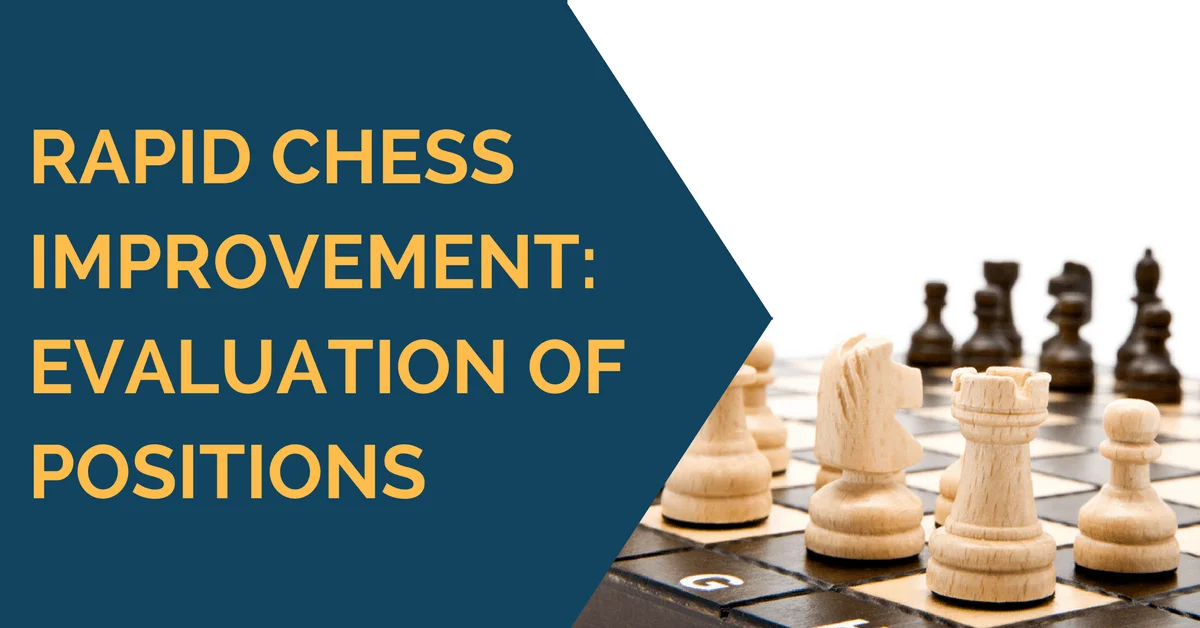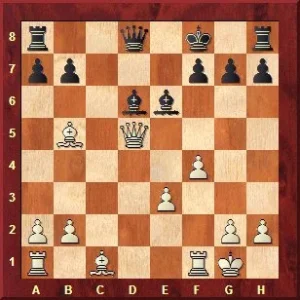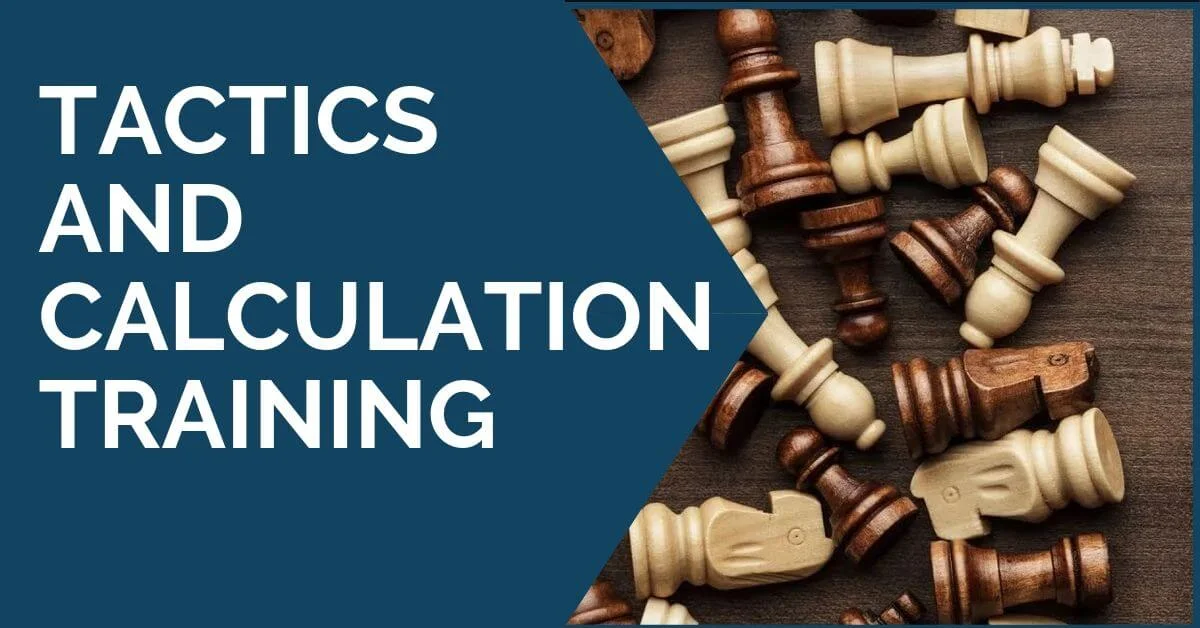Rapid Chess Improvement: Evaluation of Positions

What exactly to do in order to improve my chess? It is a common question I hear from different players all around, including my page on Facebook and Twitter.
I already gave an outline how to get better at chess, you may want to review it before reading further.
In this article, I will suggest the list of things you need to take care of in order to quickly and effectively improve your game and gain elo points.
I believe that very important aspect of the rapid chess improvement is properly organized training process. It can be divided into the following categories:
- Evaluation of Position
- Opening Repertoire
- Tactical Vision
- Calculation Technique
- Strategy
- Endgame
These are very broad categories; many books have been published on each and every category from this list. You may ask why the Middle game is not present here? Actually it is, Middle game is represented in form of evaluation of position, strategy and calculation. But, these elements can also be applied to other stages of the game as well. If you want to learn to play chess better you will need to master all these aspects of play.
I will discuss Evaluation of Position in detail today, and save other categories for later time.
Evaluation of Position
What is evaluation of position? Basically it is a technique or an algorithm that let a chess player know what side is better in particular position on the board. It is a very important component of the game of chess. Based on that evaluation, chess player is making decisions for his next move or sequence of moves. It is well known fact that if you having a positional advantage you must attack, else you’re risking losing it. Needless to say, mistakes in evaluation of position can turn out to be deadly. Here is a quick example: if a player thinks that he will win that endgame after the rook exchange, but his evaluation of position isn’t correct, he will lose the endgame by exchanging the rooks.
Why computers can play chess so well? They have precise algorithm of how the position changes with one or another move. Why GMs always beat amateurs? Because they can evaluate positions extremely well. Lesson? In order to play good chess you need to learn to evaluate chess positions precisely.
In our training program we help to train your tactical vision, endgame understanding as well as positional analysis.
Very common guideline for evaluating all chess positions consists of 4 categories:
- King’s safety
- Material on the board
- Pieces activity
- Pawn structure
We can assign for each of these categories the numeric value similar way that it is assigned in chess programs such as Fritz and Chessmaster.
King Safety – the difference of positions of the Kings. If one King is relatively safe in respect to the other one he gets a value from +1 to +2 points. We don’t take into account positions where a forced mate exists.
Material on the board – standard numeric values for the pawns and pieces can be used here. So, Pawn = 1 point, Bishop = 3 point, Knight = 3 points, Rook = 5 points, Queen = 9 points, King is assigned to 3.5 points in the endgame.
Pieces Activity – defined as the difference of activity between your piece and similar piece in the opponent’s camp (example Knight vs. Knight, Rook vs. Rook and Queen vs. Queen, etc.) Maximum difference in activity will be 1.5 points or 1.5 pawns.
Pawn Structure – control of important squares (center) by pawns, weak pawns, strong pawns, isolated pawns past pawns can give maximum advantage of 2 points. Of course we don’t take into account extreme cases where pawn can checkmate or promote to a Queen.
If White is better in particular position we will assign a positive value, such as +3, would correspond that White is 3 pawns up in position and material together. If Black is better we will write -3, which would mean Black is 3 pawns up. Take a look at the position below:

White to move
Let’s evaluate the position above according to our 4 categories.
- King Safety – White King have castled, while Black King is stuck on f8 and cannot castle. We assign a score of +0.5, or half a pawn, to White, since there is no immediate danger due to position of Black King.
- Material – White has an extra pawn on the King’s side. We give +1 to White, and total score becomes +1.5.
- Piece Activity – White’s Rook on a1 is equal to Black’s Rook on a8, White’s Rook on f8 is somewhat more active than Black’s Rook on h8 (+0.25), White’s Bishop on c1 is less active than the Black’s Bishop on d6 (-0.25), White’s Bishop on b5 is equal to Black’s Bishop on e6, White’s Queen on d5 seems to be more active than Black’s Queen, but it’s also more vulnerable for threats by Bishops, so we assume they’re equal. Total Score +1.5
- Pawn Structure – as we said previously White is a pawn up, which gives them a King’s side 4 to 3 majority. There is an equal number of pawn on the Queen’s side. We have counted pawn’s majority in Material section, total score doesn’t change: +1.5, or we can say that White is 1.5 pawns better.
If we check this position with the computer (I used Fritz 10), it gives +- 1.54 at depth of 3/43 and recommends the line 16.Qxb7 Rb8 17.Qa6 Bc5 18.f5 Bc8 19.Qc6 Qe7 20.Ba6 Bxe3+ 21.Kh1 Bxh6 22. Qxh6 +- . Our evaluation of +1.5 seems to be pretty good there.
I recommend practicing this system on some random positions and applying this method to your own over the board (OTB) games. It is not necessary to apply this method after each move, in fact it would be very time consuming and impractical to do that. You need to do the deep evaluation only in critical positions, such as after the end of an opening theory or a critical position when it is hard to see what to play. It is a very good method to apply if you don’t know what to do in positional game. It will guide you through the game, show what pieces to exchange (your inactive pieces for active pieces of your opponent).
By now you probably understand how important is the precise evaluation of chess positions is. We have refined and combined all of the important elements together and put it (along with various examples) in our training program. This outline can be applied to any chess position, and is easy to learn. Make sure to check it out!



![5 Things Every Chess Player Should Do to Improve [Cheatsheet Enclosed]](https://thechessworld.com/wp-content/uploads/2017/07/5-things-every-chess-player-should-work-on.webp)

![5 Reasons You Struggle in Chess Tournaments [and how to fix it]](https://thechessworld.com/wp-content/uploads/2019/04/7-5-reasons-you-struggle-in-chess-tournaments.webp)




Comments: